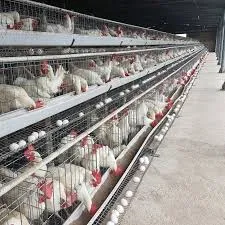Metal Structures for Poultry Housing Enhancing Safety and Comfort for Chickens
Oct . 22, 2024 00:43 Back to list
Metal Structures for Poultry Housing Enhancing Safety and Comfort for Chickens
Metal Cages for Chickens An Overview
In the world of poultry farming, the choice of housing plays a critical role in the health and productivity of chickens. Metal cages, widely used in commercial egg production and broiler farming, have become increasingly popular due to their durability and efficiency. This article explores the advantages, considerations, and best practices associated with metal cages for chickens.
Advantages of Metal Cages
1. Durability and Longevity Metal cages, often crafted from galvanized steel or other resistant materials, offer exceptional durability. Unlike wooden or plastic alternatives that may decay or suffer from wear and tear, metal cages can withstand the rigors of daily use in a poultry farm. This long lifespan translates to cost savings over time, as less frequent replacements are required.
2. Improved Biosecurity One of the primary concerns in poultry farming is biosecurity. Metal cages are less prone to harboring diseases since they can be cleaned and disinfected easily. Unlike wooden structures that may absorb moisture and pathogens, metal cages can be sanitized more effectively, reducing the risk of disease outbreaks among flocks.
3. Space Efficiency Metal cages are designed to maximize space utilization. Vertical stacking options allow producers to house more chickens in a smaller footprint compared to traditional housing systems. This efficient use of space is particularly beneficial for operations that require high stocking densities, such as commercial egg production.
4. Enhanced Production Monitoring Many metal cage systems are designed with monitoring features that allow farmers to track the health and productivity of their flocks easily. Built-in systems can provide data on feed consumption, egg production rates, and even individual bird health. This data-driven approach helps in making informed decisions that can lead to improved operational efficiency.
5. Ease of Management Metal cages often come with features that enhance management practices. Automatic feeding and watering systems can be integrated into the structure, which reduces labor costs and ensures that all birds have access to food and water at all times. Additionally, having a controlled environment can lead to better growth rates and overall flock performance.
metal cages for chickens

Considerations When Using Metal Cages
1. Animal Welfare The use of metal cages has raised concerns regarding animal welfare, especially when it comes to space allotment and the ability for chickens to exhibit natural behaviors. Many organizations advocate for cage-free systems that allow birds more room to move, perch, and forage. Farmers must balance efficiency with the ethical treatment of animals to meet consumer expectations and comply with regulations.
2. Cost Implications While the initial investment in metal cage systems can be significant, the long-term benefits often outweigh these costs. Farmers need to consider the upfront expenditure against the potential for increased productivity and reduced disease risk. Financial planning is essential to ensure that this investment will be sustainable over time.
3. Regulatory Compliance Poultry farms must comply with local and national regulations regarding housing and animal welfare. The use of metal cages may be subject to specific guidelines, particularly concerning space requirements and conditions under which birds are kept. Farmers need to stay informed about these regulations to avoid penalties and ensure the well-being of their flocks.
Best Practices for Metal Cage Management
- Regular Maintenance Inspect metal cages regularly for signs of wear or damage. Timely repairs can prevent accidents and ensure the safety of the birds. - Hygiene Protocols Establish a consistent cleaning and sanitization routine to maintain a healthy environment for the chickens. - Monitoring and Record Keeping Keep detailed records of chicken health, production rates, and any issues that arise. This information will be invaluable for making improvements and adjustments to management practices.
In conclusion, metal cages for chickens provide a robust solution for poultry farmers looking to improve efficiency and productivity. While they offer several benefits, it is crucial to consider animal welfare and regulatory compliance. By adhering to best practices, farmers can create a balanced environment that promotes both economic viability and ethical treatment of their birds. As the poultry industry continues to evolve, the role of housing systems like metal cages will remain a significant focus for producers and consumers alike.
-
Automatic Feeding Line System-Pan Feeder Nipple Drinker|Anping County Yize Metal Products Co., Ltd.
NewsJul.29,2025
-
Hot Sale 24 & 18 Door Rabbit Cages - Premium Breeding Solutions
NewsJul.25,2025
-
Automatic Feeding Line System Pan Feeder Nipple Drinker - Anping County Yize Metal Products Co., Ltd.
NewsJul.21,2025
-
Automatic Feeding Line System Pan Feeder Nipple Drinker - Anping County Yize Metal Products Co., Ltd.
NewsJul.21,2025
-
Automatic Feeding Line System - Anping Yize | Precision & Nipple
NewsJul.21,2025
-
Automatic Feeding Line System - Anping Yize | Precision & Nipple
NewsJul.21,2025






